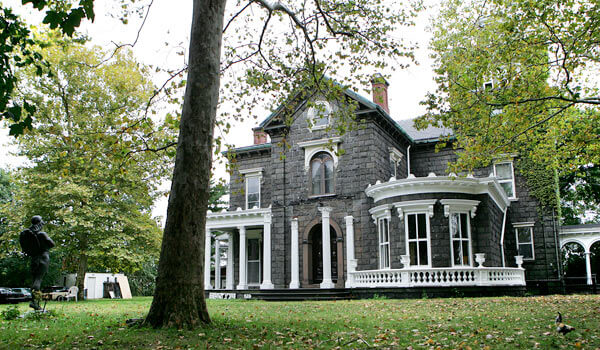By Kevin Zimmerman
The evolution of modern Queens, New York City and even the entire United States can be traced to one house on 41st Street in Astoria, says Bob Singleton.
That house is the Steinway Mansion, at 18-33 41st St., and Singleton is on a mission to make sure people understand the significance of the home built by music.
“The Steinway Mansion represents what our city is all about,” said Singleton, executive director of Friends of Steinway Mansion. “This was an immigrant family that came to New York City and succeeded at so much. That is something anyone who has lived in New York at any time can understand.”
Singleton and his group plan a series of events, beginning this weekend, in their efforts to raise $5 million to purchase the home and grounds. Once they buy the property, the Friends will begin raising money to restore the mansion and turn it into a public space for eduction and music.
On Saturday the Friends’ fund-raiser will be at SingleCut Beersmiths, at 19-33 37th St. in Astoria. The event starts at 8 p.m. and includes performances by The Dru Cutler and The Heart & Hand Band. Admission is free, but donations will be accepted to support the mission.
Singleton suggests people arrive around 6 p.m. for a pre-show rally.
“Come early and we’ll walk over to the mansion and hold up signs,” said Singleton. “We want to show the world that New York wants to save the mansion.”
Currently a city landmark, the building cannot be torn down, but until someone steps in to purchase it the house will continue to decay.
For the Friends of Steinway Mansion, the building represents everything the family did in the fields of business, transportation and entertainment, said Singleton.
When William Steinway developed Steinway Settlement as a utopian village for his company’s workers in northwest Queens, he quickly realized getting there would prove to be difficult, said Singleton. So naturally Steinway put in streetcar lines to connect the village to the rest of New York.
From there, Steinway became involved in designing the borough’s transportation system.
“He created a transit network knitting together the various villages and hamlets of Queens,” said Singleton. “The No. 7 train tunnels [under the East River] are still called the Steinway tubes.”
And it wasn’t just trains that received Steinway’s attention.
A decade before Henry Ford delved into the automobile world, the Steinways formed an alliance with Gottlieb Daimler to sell gasoline engines. They also assembled Mercedes vehicles in their Astoria factory, said Singleton.
Because they made their fortune creating pianos, a lot of their achievements are related to music, said Singleton.
They brought performers from Europe and sponsored their national tours. The family also built Steinway Hall, on 14th Street in Manhattan, in 1866. This became the epicenter of the city’s culture and even housed the New York Philharmonic until Carnegie Hall opened in 1891.
Part of the fund-raising effort is to bring music into the Steinway Mansion, said Singleton.
He eventually hopes to form partnerships with schools and families with children to turn the mansion into a teaching facility.
“I see this as a place to teach artisan art and craftsmen art,” said Singleton. “It will be a wonderful place for young people to explore their creativity.”


































